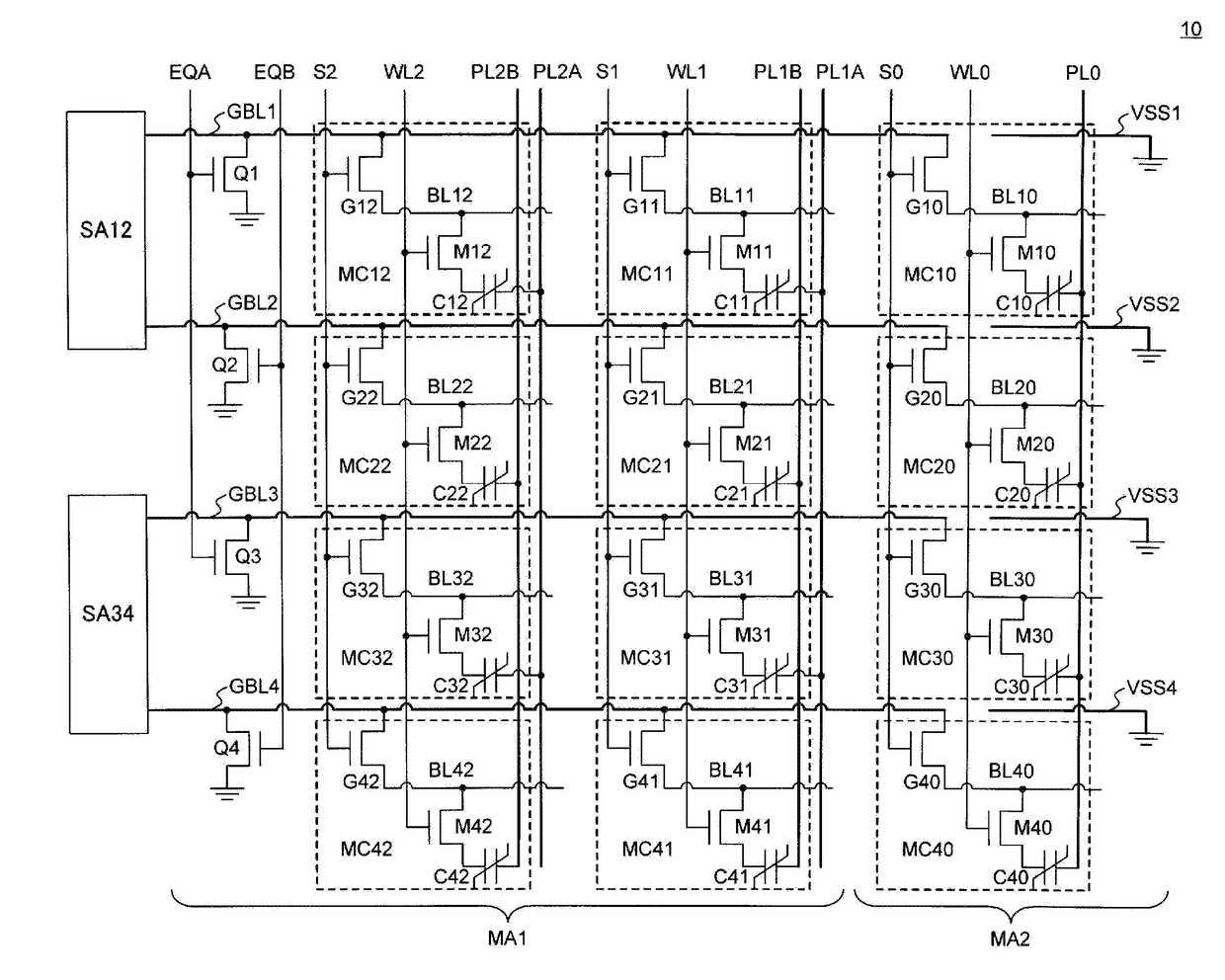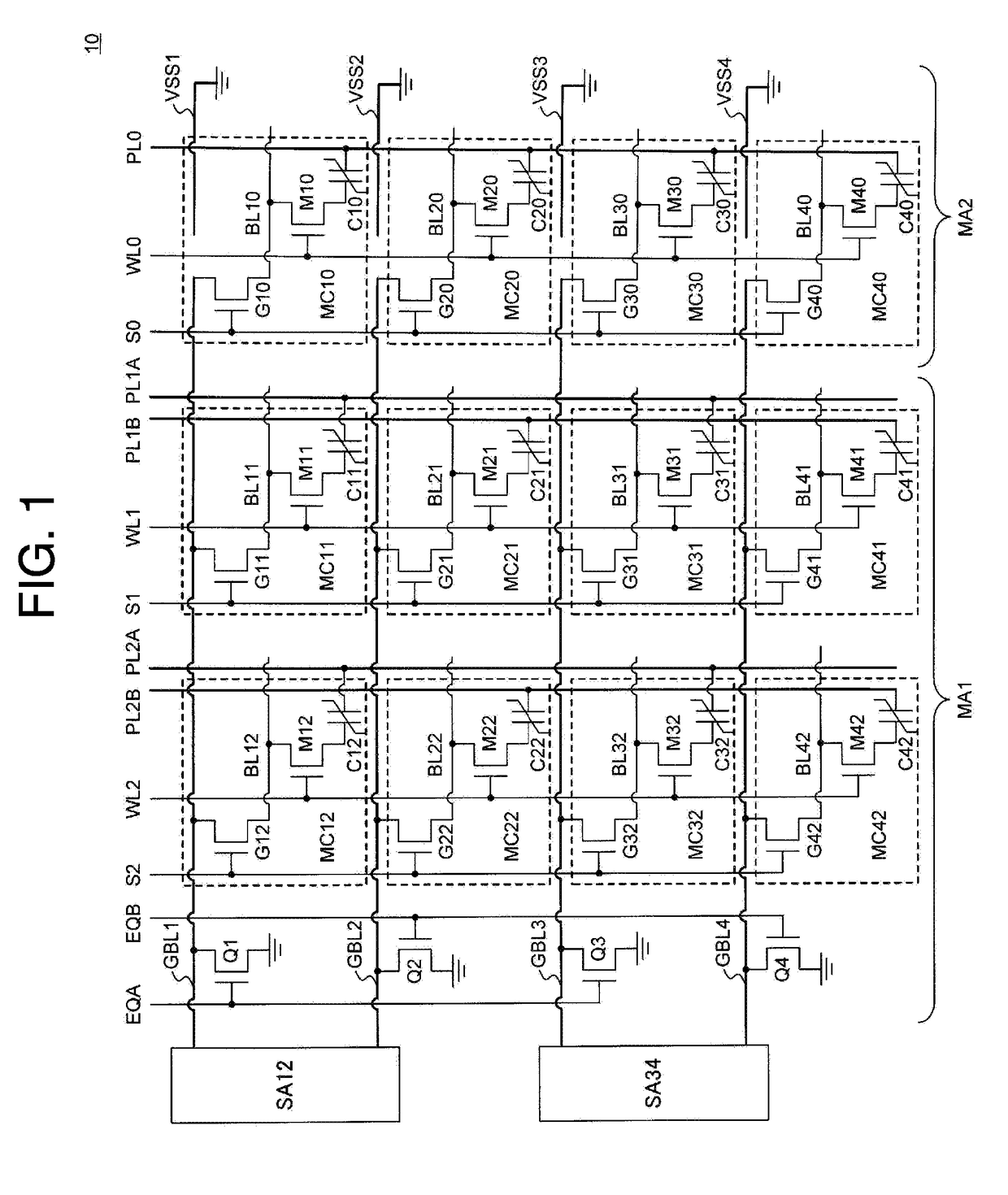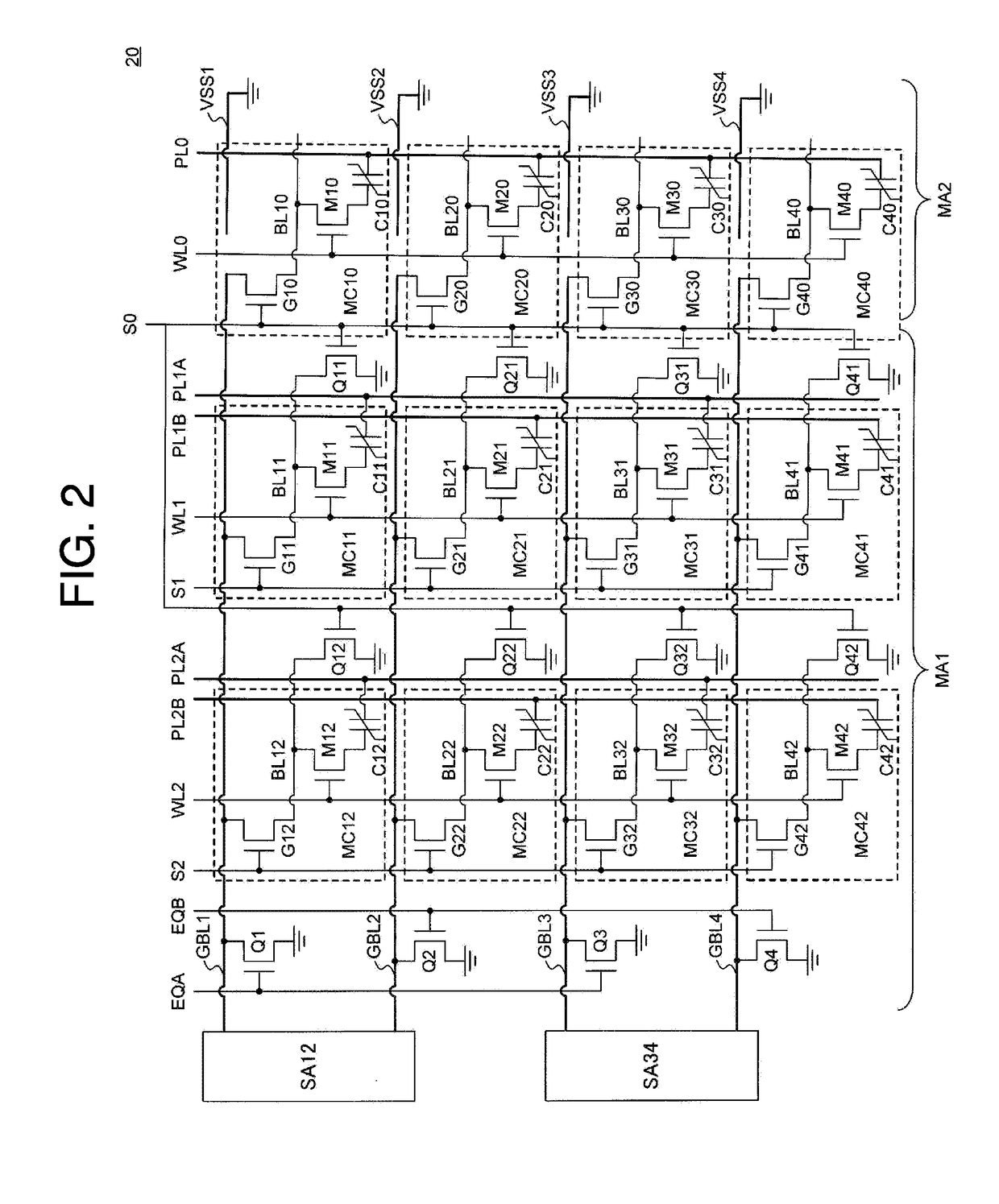Semiconductor memory
- Summary
- Abstract
- Description
- Claims
- Application Information
AI Technical Summary
Benefits of technology
Problems solved by technology
Method used
Image
Examples
embodiment 1
[0015]FIG. 1 is a circuit block diagram showing a semiconductor memory 10 according to the present invention. The semiconductor memory 10 has a first memory region MA1 and a second memory region MA2.
[0016]The first memory region MA1 has pairs of plate lines connected alternately to memory cells arranged in the column direction, and is a memory region where data is read by comparing a signal from a memory cell with a reference signal (hereinafter referred to as reading using a reference signal). The second memory region MA2 has one plate line connected to the memory cells arranged in the column direction, and is a memory region where data is read by comparing complementary signals from pairs of memory cells (hereinafter referred to as complementary reading). In other words, the first memory region MA1 is a so-called 1T1C-type memory region, and the second memory region MA2 is a so-called 2T2C-type memory region.
[0017]In the first memory region MA1, upper bit lines GBL1 to GBL4 are fo...
embodiment 2
[0064]FIG. 2 is a circuit block diagram showing a semiconductor memory 20 according to the present invention. The semiconductor memory 20 differs from the semiconductor memory 10 of Embodiment 1 by having bit line discharge transistors Q11, Q12, Q21, Q22, Q31, Q32, Q41, and Q42.
[0065]In the bit line discharge transistor Q11, the drain terminal is connected to a lower bit line BL11, and the source terminal is grounded. In the bit line discharge transistor Q21, the drain terminal is connected to a lower bit line BL21, and the source terminal is grounded. In the bit line discharge transistor Q31, the drain terminal is connected to a lower bit line BL31, and the source terminal is grounded. In the bit line discharge transistor Q41, the drain terminal is connected to a lower bit line BL41, and the source terminal is grounded. In the bit line discharge transistor Q12, the drain terminal is connected to a lower bit line BL12, and the source terminal is grounded. In the bit line discharge t...
embodiment 3
[0073]FIG. 3 is a circuit block diagram showing a semiconductor memory 30 according to the present invention. The semiconductor memory 30 differs from the semiconductor memory 10 of Embodiment 1, which only has one plate line PL0 in the second memory region MA2, in that the semiconductor memory 30 has a pair of plate lines PL0A and PL0B in the second memory region MA2.
[0074]The plate line PL0A is connected to the second terminals (ends not connected to memory cell transistors) of ferroelectric capacitors C10 and C30. The plate line PL0B is connected to the second terminals of ferroelectric capacitors C20 and C40. In other words, in the semiconductor memory 10 of Embodiment 1, the ferroelectric capacitors C10, C20, C30, and C40 are all connected to the same plate line PL0, whereas in the semiconductor memory 30 of the present embodiment, every other ferroelectric capacitors C10, C20, C30, and C40 is connected alternately to the plate lines PL0A and PL0B.
[0075]The plate lines PL0A and...
PUM
 Login to View More
Login to View More Abstract
Description
Claims
Application Information
 Login to View More
Login to View More - R&D
- Intellectual Property
- Life Sciences
- Materials
- Tech Scout
- Unparalleled Data Quality
- Higher Quality Content
- 60% Fewer Hallucinations
Browse by: Latest US Patents, China's latest patents, Technical Efficacy Thesaurus, Application Domain, Technology Topic, Popular Technical Reports.
© 2025 PatSnap. All rights reserved.Legal|Privacy policy|Modern Slavery Act Transparency Statement|Sitemap|About US| Contact US: help@patsnap.com



